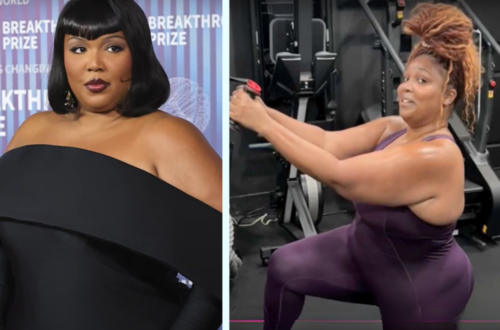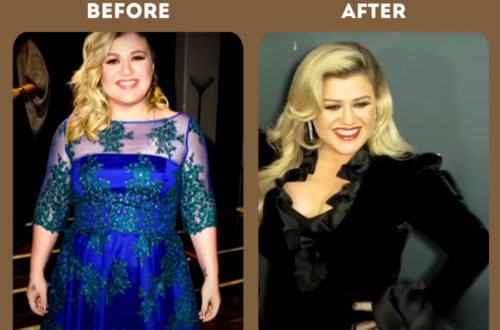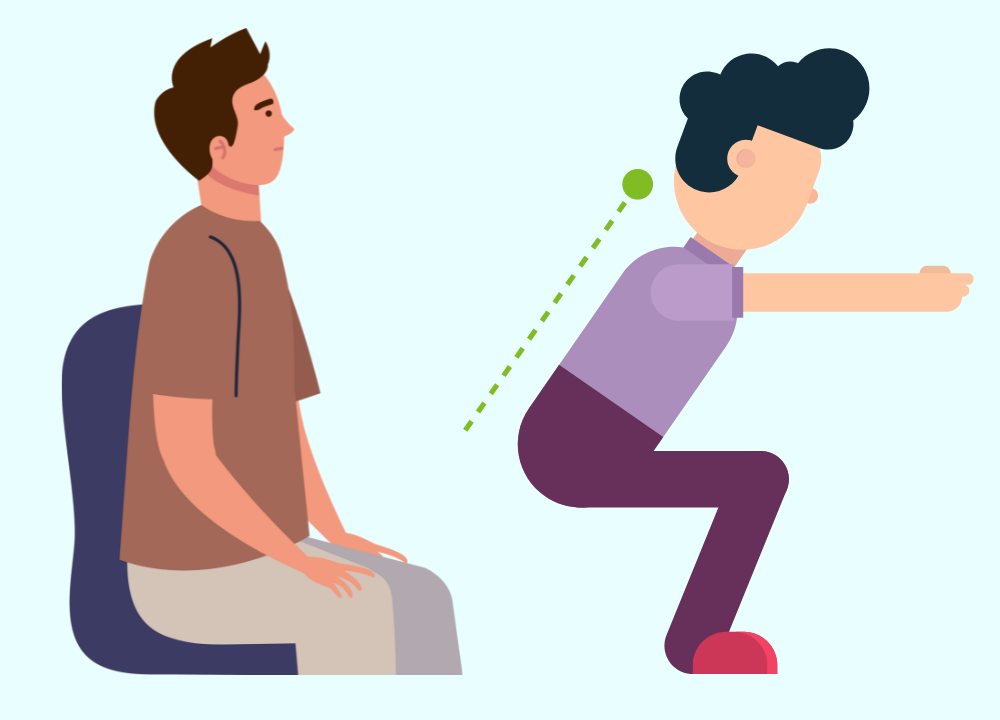
Top 5 Postures to Support Weight Loss: Can Posture Really Help?
Top 5 postures can support weight loss by improving muscle engagement and boosting metabolism. Proper posture enhances calorie burn and overall fitness.
Good posture is crucial for overall health and can aid weight loss efforts. Standing and sitting correctly engages core muscles, improving stability and balance. This engagement can help burn more calories throughout the day. Regular practice of specific postures can enhance muscle tone and support weight management.
Table of Contents
How Does Posture Relate To Weight Loss?
Maintaining good posture not only enhances your appearance but also supports your weight loss efforts. Let’s explore how posture relates to weight loss and how it can make your journey easier.
Posture And Core Engagement
Good posture naturally engages your core muscles. These muscles include the abdominals, obliques, and lower back muscles. When you stand or sit up straight, your core stays active.
Core engagement helps in multiple ways:
- Improves balance: A strong core stabilizes your body.
- Enhances strength: Engaging core muscles makes them stronger.
- Reduces fatigue: Proper posture reduces strain on other muscles.
Engaging your core through good posture also burns more calories. Even simple activities like standing up straight can activate your muscles. This makes your body work harder, leading to more calorie burn.
Here is a quick comparison of calorie burn with and without core engagement:
| Activity | Calories Burned (Without Core Engagement) | Calories Burned (With Core Engagement) |
|---|---|---|
| Sitting | 80 | 100 |
| Standing | 100 | 120 |
Improving Metabolism Through Proper Alignment
Proper alignment positively affects your metabolism. When your body is in good posture, your organs function optimally. This includes your digestive organs, which play a role in metabolism.
Here’s how proper alignment improves metabolism:
- Better digestion: Good posture allows your stomach and intestines to function properly.
- Improved circulation: Proper alignment ensures that blood flows efficiently throughout your body.
- Enhanced breathing: Good posture opens up your diaphragm, improving oxygen intake.
Improved digestion means that your body breaks down food more efficiently. Efficient digestion and circulation aid in faster metabolism. This helps in burning calories faster and supports weight loss.
In contrast, poor posture can slow down your metabolism. This is because slouching compresses your organs, making it harder for them to function properly. Therefore, maintaining good posture is essential for a healthy metabolism.
The Impact Of Poor Posture On Physical Activity
Poor posture affects your ability to engage in physical activities. When you slouch or hunch, you place extra stress on your muscles and joints.
The negative effects of poor posture on physical activity include:
- Reduced endurance: Poor posture makes you tire quickly.
- Increased injury risk: Misalignment can lead to muscle strains and injuries.
- Decreased performance: Slouching hinders your ability to perform exercises effectively.
When your body is not in proper alignment, it uses more energy to perform basic activities. This leads to quicker fatigue and less effective workouts. It also increases the risk of injuries, which can derail your fitness goals.
Benefits Of Good Posture For Weight Loss
Let’s dive into the benefits of good posture for weight loss and how it can help you achieve your fitness goals.
Reduced Risk Of Injury During Exercise
Proper posture ensures that your body is aligned correctly, reducing the strain on your muscles and joints. This alignment minimizes the risk of injuries during physical activities. Maintaining good posture while exercising helps you perform movements more efficiently and safely.
- Prevents muscle strain: With the right posture, you distribute your body weight evenly, avoiding unnecessary strain on specific muscles.
- Improves balance: Good posture enhances your balance, making exercises like squats and lunges safer and more effective.
- Protects joints: Proper alignment reduces the wear and tear on joints, preventing injuries like sprains and tears.
Consider this table to understand the impact of good posture on different exercises:
| Exercise | With Poor Posture | With Good Posture |
|---|---|---|
| Running | Increased risk of knee injuries | Balanced weight distribution |
| Weightlifting | Higher chance of back strain | Proper lift and reduced strain |
| Yoga | Imbalanced poses | Stable and effective poses |
Better Breathing And Oxygen Flow
Good posture opens up your chest cavity, allowing your lungs to expand fully. This enhances your breathing and improves oxygen flow throughout your body. Better oxygen flow is essential for efficient calorie burning and overall stamina.
When you maintain an upright posture, you can experience:
- Enhanced lung capacity: Proper alignment gives your lungs more room to expand, increasing your ability to take deeper breaths.
- Improved stamina: More oxygen means more energy, allowing you to exercise longer and more effectively.
- Better focus: Adequate oxygen flow to the brain helps you stay alert and focused during workouts.
Check out this comparison of breathing efficiency:
| Posture | Breathing Efficiency | Exercise Performance |
|---|---|---|
| Slouched | Reduced lung capacity | Lower stamina |
| Upright | Full lung expansion | Enhanced endurance |
Enhanced Confidence And Motivation
Good posture instantly boosts your appearance, making you look more confident and in control. This confidence can translate into increased motivation to stick to your weight loss goals. Feeling good about yourself encourages you to maintain a healthy lifestyle.
Some benefits of improved confidence include:
- Better self-image: Standing tall makes you feel better about yourself, promoting a positive self-image.
- Increased motivation: Confidence drives you to keep pushing towards your fitness goals.
- Social benefits: Good posture can make you appear more approachable and engaged, enhancing your social interactions.
Here’s a quick comparison to illustrate the difference:
| Aspect | Poor Posture | Good Posture |
|---|---|---|
| Self-Image | Low confidence | High confidence |
| Motivation | Decreased motivation | Increased motivation |
| Social Interaction | Less approachable | More approachable |
Posture 1: Standing Tall
When thinking about weight loss, posture might not be the first thing that comes to mind. Yet, the way you hold your body can significantly impact your journey to shed those extra pounds.
Benefits Of Standing
Standing tall can bring numerous benefits that help with weight loss. Here are some key advantages:
- Burns more calories: Standing burns more calories than sitting. Even standing for a few hours each day can help you lose weight.
- Improves digestion: Standing helps in better digestion. It prevents problems like bloating and indigestion.
- Boosts energy levels: Standing keeps you more active. This boosts your energy levels and keeps you alert.
- Reduces back pain: Good posture reduces the risk of back pain. Standing tall ensures your spine is in proper alignment.
Consider the following table to see the difference in calories burned between sitting and standing:
| Activity | Calories Burned Per Hour |
|---|---|
| Sitting | 60-70 |
| Standing | 100-200 |
How To Maintain Proper Alignment
Maintaining proper alignment while standing is crucial. Here’s how to do it:
- Feet position: Place your feet shoulder-width apart. Distribute your weight evenly on both feet.
- Engage your core: Tighten your abdominal muscles. This helps in maintaining a straight posture.
- Shoulder alignment: Keep your shoulders back and relaxed. Avoid slouching or hunching them forward.
- Head position: Keep your head level. Your ears should be in line with your shoulders.
- Use a mirror: Check your posture in a mirror. This helps you correct any misalignments.
It’s easy to forget your posture during the day. Setting reminders on your phone can help you stand tall consistently. Good posture becomes a habit with practice. This habit can contribute significantly to your weight loss goals.

Posture 2: Seated Strength
This posture is about sitting correctly to engage your core muscles and maintain a healthy spine. Let’s delve deeper into how seated strength can help with weight loss.
Choosing The Right Chair
Choosing the right chair is crucial for maintaining good seated posture. A chair that supports your back and allows you to sit comfortably can make a significant difference. Here are some key features to look for:
- Adjustable Height: Ensure your feet are flat on the floor, and your knees are at a 90-degree angle.
- Lumbar Support: A good chair should support the natural curve of your lower back.
- Armrests: These should be adjustable and allow your shoulders to relax.
- Seat Depth: There should be a small gap between the edge of the seat and the back of your knees.
Here’s a table summarizing the key features:
| Feature | Importance |
|---|---|
| Adjustable Height | Ensures feet are flat on the floor |
| Lumbar Support | Supports lower back |
| Armrests | Allows shoulders to relax |
| Seat Depth | Prevents knee strain |
By choosing a chair with these features, you can maintain a posture that engages your core and supports weight loss.
Exercises For Seated Posture
Once you have the right chair, incorporate exercises to strengthen your seated posture. These exercises will engage your core and help with weight loss. Here are a few simple exercises:
- Seated Leg Lifts: Sit upright, lift one leg off the floor, hold for a few seconds, then lower it. Repeat with the other leg.
- Seated Torso Twists: Sit with a straight back, twist your torso to the right, hold for a few seconds, then twist to the left.
- Seated Marching: Lift your knees alternately as if you are marching while seated. This engages your core and legs.
Here’s a quick guide:
| Exercise | Description | Repetitions |
|---|---|---|
| Seated Leg Lifts | Lift one leg, hold, lower, repeat with the other leg | 10 each leg |
| Seated Torso Twists | Twist torso to each side, hold | 10 each side |
| Seated Marching | Lift knees alternately | 20 total |
Incorporating these exercises into your daily routine can enhance your seated posture and support your weight loss journey.
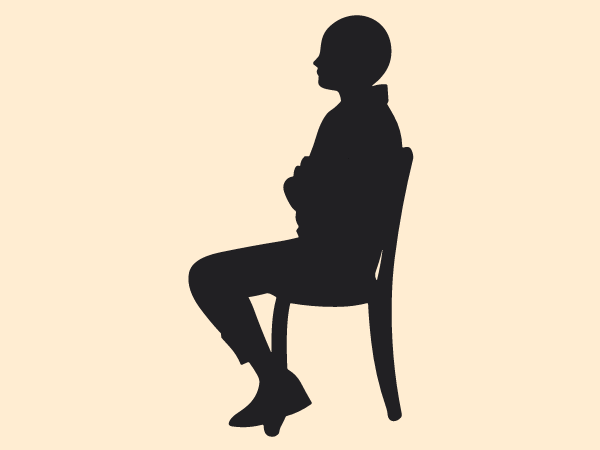
Posture 3: Core Engagement
This posture not only helps in burning calories but also improves overall body alignment.
Importance Of Core Strength
The core is the center of your body. It includes muscles in the abdomen, back, and pelvis. A strong core is essential for maintaining balance, stability, and proper posture.
Core strength supports your spine and reduces the risk of injury. Here are some key benefits of a strong core:
- Improved Posture: A strong core helps you stand tall and sit straight, reducing slouching.
- Better Balance: Core muscles stabilize your body, aiding in balance and coordination.
- Pain Reduction: Strengthening core muscles can alleviate back pain and discomfort.
- Enhanced Athletic Performance: Athletes rely on strong core muscles for efficient movement and power.
Studies show that a strong core can also aid in weight loss. Engaging your core during exercises increases calorie burn. This is because more muscles are working, leading to higher energy expenditure.
Here is a table summarizing the benefits of core strength:
| Benefit | Description |
|---|---|
| Improved Posture | Helps in standing tall and sitting straight |
| Better Balance | Stabilizes the body, aids in coordination |
| Pain Reduction | Alleviates back pain and discomfort |
| Enhanced Athletic Performance | Efficient movement and power for athletes |
Techniques For Activation
Activating your core is crucial for reaping its benefits. Proper activation ensures that the right muscles are engaged and working effectively.
Here are some techniques to activate your core:
- Planks: Start in a push-up position. Keep your body straight and hold for 30 seconds.
- Dead Bug: Lie on your back. Extend your arms and legs in the air. Lower one arm and the opposite leg simultaneously and return to the starting position.
- Bird-Dog: Start on your hands and knees. Extend one arm and the opposite leg, then switch.
- Bridge: Lie on your back with knees bent. Lift your hips towards the ceiling and hold.
- Mountain Climbers: Start in a plank position. Bring one knee towards your chest, then switch legs quickly.
Remember to engage your core during everyday activities. Stand tall, tighten your abdominal muscles, and avoid slouching. Consistent practice will strengthen your core over time.
Incorporate these exercises into your routine to maximize calorie burn and enhance your weight loss efforts. Proper core engagement not only supports weight loss but also improves your overall health and well-being.
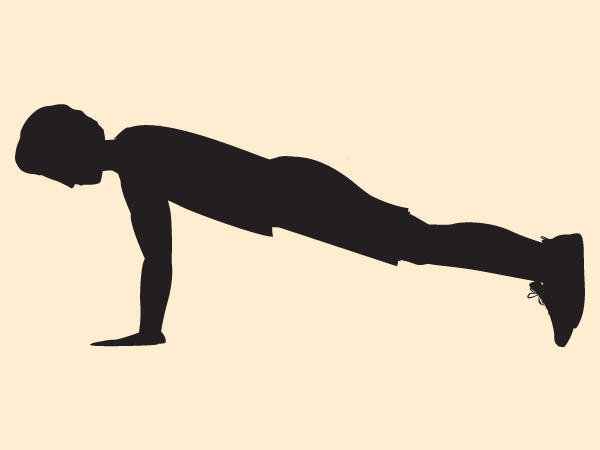
Posture 4: Stretching And Flexibility
Stretching not only improves your posture but also boosts calorie burning. Flexibility exercises enhance muscle function, making your workouts more effective.
Key Stretches For Weight Loss
Stretching is vital for weight loss. It improves blood flow, enhances muscle function, and reduces the risk of injuries. Here are some key stretches to incorporate:
- Hamstring Stretch: Sit on the floor with one leg extended. Reach towards your toes. Hold for 30 seconds. Switch legs.
- Quadriceps Stretch: Stand on one leg. Pull the other foot towards your buttocks. Hold for 30 seconds. Switch legs.
- Shoulder Stretch: Bring one arm across your body. Hold it with the other arm. Hold for 30 seconds. Switch arms.
- Cat-Cow Stretch: Get on all fours. Arch your back up like a cat. Then, dip it down like a cow. Repeat 10 times.
These stretches target major muscle groups. They improve flexibility and help burn calories. Including these stretches in your routine can make a significant difference.
| Stretch | Duration | Repetitions |
|---|---|---|
| Hamstring Stretch | 30 seconds | 2 times each leg |
| Quadriceps Stretch | 30 seconds | 2 times each leg |
| Shoulder Stretch | 30 seconds | 2 times each arm |
| Cat-Cow Stretch | 1 minute | 10 times |
Incorporating Flexibility Routines
Flexibility routines are essential for improving posture and aiding weight loss. Here’s how to incorporate them:
- Morning Routine: Start your day with a 10-minute stretch session. Include stretches like the hamstring and quadriceps stretches. This wakes up your muscles and prepares them for the day.
- Work Breaks: Take short breaks during work to stretch. Perform shoulder stretches and Cat-Cow stretches to relieve tension. This keeps your body active and flexible.
- Pre-Workout: Include a 5-minute stretching routine before your workout. This improves muscle performance and reduces the risk of injury.
- Post-Workout: Stretch for 10 minutes after your workout. This helps in muscle recovery and prevents stiffness.
- Evening Routine: End your day with a calming stretch session. Include deep breathing and gentle stretches. This relaxes your muscles and prepares your body for sleep.
Incorporating these routines ensures your muscles stay flexible and strong. Consistency is key. Make these stretches a part of your daily life. Your posture and weight loss journey will greatly benefit.
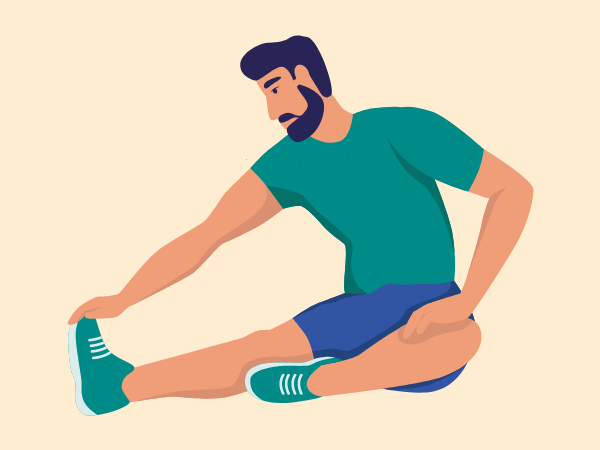
Posture 5: Mindful Movements
Mindful Movements” stands out. These movements involve exercises that integrate both the body and the mind, like yoga and Pilates. These practices not only improve posture but also contribute to weight loss.
Yoga And Pilates Benefits
Yoga and Pilates are excellent for enhancing posture and promoting weight loss. Both practices emphasize core strength, flexibility, and balance. Here are some key benefits:
- Core Strength: Strengthening the core stabilizes the body, reducing the risk of injury and improving posture.
- Flexibility: Increased flexibility helps you move more freely and reduces muscle tension.
- Stress Reduction: Both practices incorporate breathing techniques that lower stress levels, which is essential for weight loss.
- Mind-Body Connection: Enhancing awareness of body movements and posture helps in maintaining proper form during daily activities.
Consider the following comparison between Yoga and Pilates:
| Aspect | Yoga | Pilates |
|---|---|---|
| Focus | Flexibility, Balance, Strength | Core Strength, Stability |
| Equipment | Mat, Blocks | Mat, Reformer |
| Breathing | Deep, Controlled | Specific Breathing Patterns |
Practicing Mindfulness In Posture
Practicing mindfulness while maintaining posture can significantly impact weight loss. Mindfulness involves being present and fully engaging with each movement. Here’s how you can practice mindfulness in posture:
- Slow Movements: Perform movements slowly and deliberately to engage muscles fully.
- Breathing Techniques: Use deep breathing to enhance focus and reduce stress.
- Body Awareness: Pay attention to how your body feels in different positions.
- Regular Practice: Consistency is key. Practice daily for the best results.
Here’s a quick daily routine to incorporate mindful movements:
- Start with deep breathing exercises for 5 minutes.
- Perform a series of slow stretches, focusing on alignment.
- Engage in core-strengthening exercises like planks or bridges.
- Finish with a relaxation pose, focusing on your breath.
Implementing these practices can lead to improved posture, reduced stress, and effective weight loss.



